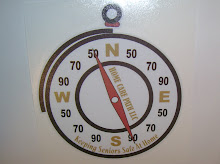One aspect of evaluating change in the hospital system is utilization according to the pay source. The health care system looks at trends in payers as a way to determine service sustainability. As the nation ages the hospital system is having more stays paid through Medicare a public fund.
HHS Agency for Health Care Quality and Research report Medicare (public funding) was the primary pay source for 14.5 million hospital stays in 2010 and this represents a 12% increase since 1997.
Private health insurance (private funding) was the primary pay source for 12.5 million hospital stays in 2010 and this represents a 7% decrease since 1997.
Although the shift from private insurance payment to public insurance payment has been expected, the changes may seem abrupt. Medicare recognizing the ever increasing claims on their collected and stored money has developed policy that helps reduce out flow and maintain some risk reserve.
Medicare policy is encouraging Medicare certified providers to perform their medical treatment and bill at the appropriate level of care. This will contribute to an increase in hospital outpatient and clinic procedures aimed at reducing over night hospital stays.
What this means to the consumer is a person must be severely ill to be admitted to a hospital over night. The length of time an individual stays in the hospital will be shorter. A long hospitalization consists of about a 3 night stay.
Hospital providers will be dependent upon supportive care (www.homecarepath.com) agencies capable of assisting the person in the home. Seniors presenting at the emergency room with symptoms of an illness may not demonstrate the diagnostic level needed for an inpatient stay. Although unable to be alone, the ill senior is not sick enough to be eligible for a hospital stay. Responsible health care providers will refer the senior to a supportive care agency that can maintain close contact with the medical staff.
Individuals discharged from the hospital will need help during recovery. Both hospital providers and insurance payers now agree that 30 days post hospitalization is a time every person needs extra support. Communities are being challenged to understand how managing discharged seniors to home will look. Fiscal responsibility calls for skilled community care providers to collaborate with supportive care providers as a way to demonstrate appropriate level of delivery with each defined transition of care.
Wisconsin's PATH ALONG model helps seniors during the hospital stay and with the outpatient treatment visits. PATH ALONG is a strong arm of Home Care Path a community based organization committed to performing a service that supports the changing needs of an aging population. You are cordially invited to down load your free PATH ALONG app today
http://appsmakerstore.com/appim/j6kcdet8xvwk4s
Thursday, March 28, 2013
Subscribe to:
Post Comments (Atom)

No comments:
Post a Comment